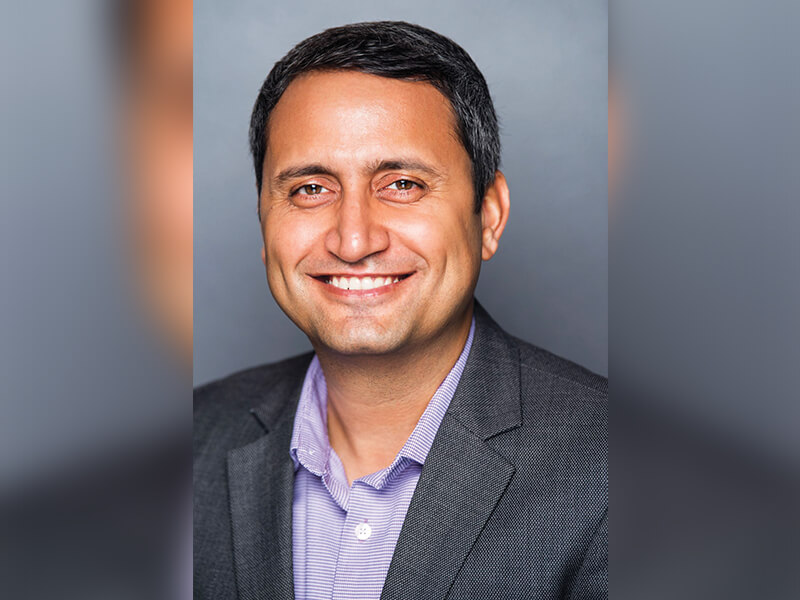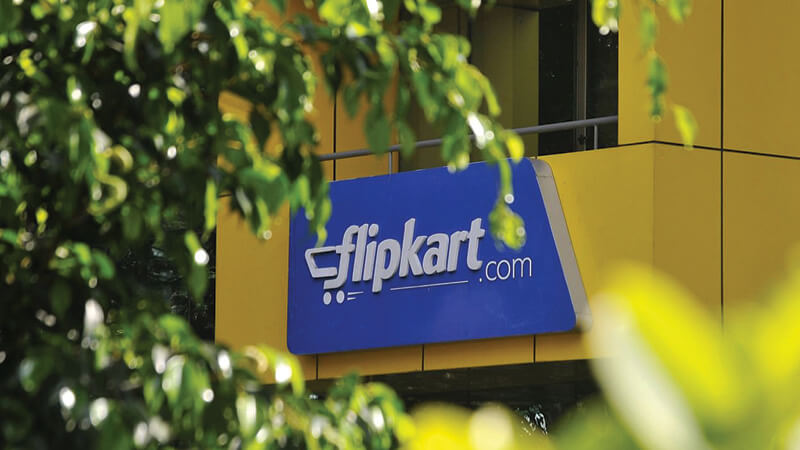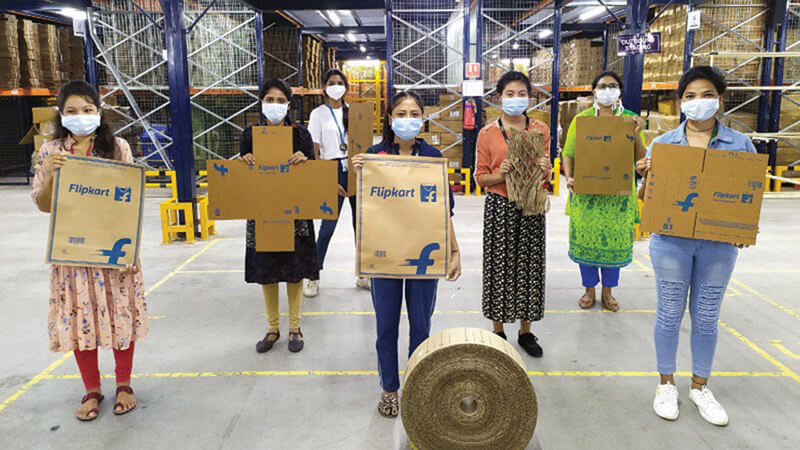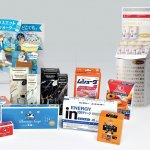We have achieved a milestone of 100 percent elimination of plastic packaging and adoption of sustainable packaging alternatives across our own supply chain.

Flipkart is one of India’s leading e-commerce marketplaces. Founded in October 2007, the company offers around 150 million products spread across 80+ categories. Recently, the e-commerce major announced that it has eliminated almost all single-use plastic packaging used across its fulfilment centres in the country. This includes switching to eco-friendly paper shreds, replacing poly pouches with recycled paper bags, replacing bubble wraps with carton waste shredded material among others. Paper Mart got the opportunity to interact with Mr. Mahesh Pratap Singh, Head – Sustainability and Social Responsibility, Flipkart and know more about the impact of sustainable packaging and the contribution of the company in this regard.
Paper Mart: Please shed light on the innovative and sustainable packaging solutions by your company. How are you strategizing to boost their adoption across your supply chain?
Mahesh Pratap Singh: Sustainability is one of the core tenets of our values and the way we conduct business at Flipkart. As we continue to grow and democratise e-commerce across India, we have made conscious efforts to incorporate sustainability across functions to reduce our environmental impact. With this thought, we doubled down on our sustainability initiatives and made a commitment to eliminate single-use plastic packaging from our own supply chain in 2019. In line with the efforts, we have achieved a milestone of 100 percent elimination of plastic packaging and the adoption of sustainable packaging alternatives across our own supply chain.
Additionally, in July this year, more than 75 percent of our seller fulfilled shipments have also now been processed in sustainable packaging marking a 20 times increase over July 2020. The initiative today covers more than 700 hubs across India. We have taken various steps in this journey, including analysing and studying circular economy models, looking at ways for packaging optimisation, creating national standards on packaging materials to reduce waste in our supply chain, promoting reusable materials, while encouraging green packaging. Our sustainability journey has been marked by an orchestrated effort to create a positive environmental and social impact. This milestone was achieved by introducing the most scalable sustainable alternatives such as eco-friendly paper shreds, replacing poly pouches with recycled paper bags, replacing bubble wraps with carton waste shredded material and 2 ply rolls, to name a few. Throughout this process, we have also ensured that we are fully compliant with all EPR regulations and through our network of recyclers, the equivalent quantity of single-use plastic going to consumers is fully recycled.
This milestone was achieved by introducing the most scalable sustainable alternatives such as eco-friendly paper shreds, replacing poly pouches with recycled paper bags, replacing bubble wraps with carton waste shredded material and 2 ply roll, to name a few.
PM: How do you view the impact of sustainable packaging and your contribution in this regard?
MPS: Packaging is ubiquitous in everyday life and usage of traditional packaging has led to a strain on resources, environment and biodiversity due to the choice of materials used, lack of recyclable options and unsustainable disposal mechanisms. There has been an increasing focus from consumers, governments, brands, packaging producers on collective action to shift to environmentally friendly solutions and better waste management practices. Some of the quick wins that have helped most stakeholders have been reducing the quantity of plastic used in packaging, improving recyclability and innovations in materials used. These solutions will help reduce our impact on our ecosystems. However, to derive long-term value for a positive impact on the planet, there has to be a reconsideration of the packaging design itself to suit diverse applications. Packaging in the coming years needs to be more functional, designed to be recyclable, reusable and regenerative in nature.
To this effect, we have introduced ‘E-commerce ready packaging’, where 15 percent of products have been shipped without adding a secondary layer of packaging. Flipkart’s ambition is to reduce the need for an outer layer by working with brands across apparel, electronics and home furnishings to ship their products in the original manufacturer/brand packaging. We are also working towards making sure that the packaging used does not cause any deforestation by scaling packaging from recycled and alternative materials.
Additionally, we have also been working on initiatives like sourcing or designing reusable/refillable shipping boxes, minimising the usage of packaging materials for resource efficiency, giving preference to packaging with high-recycled content, and sourcing packaging made from alternative fibres and supporting emerging circular solutions.

We have taken various steps in this journey, including analysing and studying circular economy models, looking at ways for packaging optimisation, creating national standards on packaging materials to reduce waste in our supply chain, promoting reusable materials, while encouraging green packaging.
Watch: Paper Mart News Roundup
PM: As customers are increasingly moving towards eco-friendly shopping experiences; how do you view paper packaging as a resource-efficient product with the lowest environmental impact?
MPS: We have been actively collaborating working with various partners on long-term sustainability initiatives and have received positive customer responses on the successful implementation of greener alternatives like multi-use belts, recycled paper-based pouches, and carton waste shredded material. In phases, these have been replacing stretch film, polythene pouches, and plastic fillers such as bubble wrap and airbags. While we have ensured that the alternatives implemented possess a high degree of recyclability and reusability, we are constantly working to explore best practices including researching and applying emerging and circular economy innovations.
Given that usage of forest-based substitutes might give rise to environmental issues, we are working to avoid sourcing from ancient and endangered forests and develop conservation plans to protect them. We will also be exploring research and development of commercial-scale production of packaging from alternative fibre sources. We are also encouraging our suppliers to continuously improve and expand the availability of recycled content in papers/packaging.
We are also actively working with our seller partners, who fulfil customer orders directly from their locations to educate them and enable them to move towards alternative materials.
In the beginning, we did several pilots, and our teams came together for various trials and errors on possible alternatives. For instance, replacement of airbags with shredded paper
- A shredding or meshing machine converts corrugated boxes into mesh sheets, which are used as a void filler or cushion wrapper to protect products from transit damages. These machines were installed at all of our major fulfilment centers. Currently, no material is procured for void fillers and corrugated cartons received from brands are recycled.
Invoice polybag replaced with paper pouch
- Poly bags were being used for attaching customer invoices to packaging. The pouch has been replaced with a recycled kraft paper pouch. It is made of 100 percent recycled paper which gets further recycled leading to zero landfills.
- Similarly, the plastic used for secondary packaging has been replaced with paper bags and multi-use polyester bags for reverse shipment processes.
PM: What kind of trends do you foresee in the coming years?
MPS: We expect further growth of optimised packaging systems that ensure minimal wastage of resources while at the same time, use of new-age materials such as agricultural residue for creating packaging is likely to be adopted well by the industry. There will be an increased focus on a higher degree of recyclability and reusability in packaging materials, thereby promoting circular packaging systems. The circularity of packaging materials wherein all packaging can be upcycled into other products instead of going to landfills is inevitable, with refillable packaging emerging as a trend to watch out for. Sustainable design that will do away with the need to add a secondary layer of packaging for a product or use materials that can be repurposed for other use cases is sure to be the course of action in the coming years.
PM: What challenges do you face while procuring packaging materials and what expectations do you have from the packaging companies?
MPS: Sustainability is a journey, and the collective efforts of the ecosystem play a pivotal role in moving towards a low carbon economy in order to ensure that our solutions have a positive social and environmental impact. This assumes significance as we are building eco-friendly alternatives for one of the fastest-growing industries in India having a country-wide presence.
To ensure that, we are looking at addressing material issues related to the broader packaging ecosystem, we have partnered with Canopy, a not-for-profit environmental organisation, for responsible sourcing of sustainable packaging and man-made cellulosic fibers. We have joined Canopy’s Pack4Good and CanopyStyle initiatives under which we will be focusing on the following activities:
- Exploring sourcing or designing of reusable/refillable shipping boxes to reduce corrugated paper and paperboard,
- Encouraging the use of recycled, reusable and/or FSC certified paper and packaging as well as sourcing products with responsibly sourced man-made cellulosic fibres,
- Designing and implementing systems that minimize the use of packaging materials,
- Increase utilisation of recycled materials in packaging,
- Utilise reusable packaging systems for intra-business applications,
- Increase the use of digital communication, marketing and accounting systems,
- Adopt best practices including researching and applying emerging and circular economy innovations,
- Increasing the use of responsibly sourced man-made cellulosic fibre for in-house products including rayon/viscose, lyocell, and modal.
These efforts will further strengthen our commitment to sustainable solutions for packaging and realize our vision of sustainable growth. Accomplishing these goals will require collaboration on many fronts with our seller partners, suppliers, and other ecosystem players. We are also working with other stakeholders in the ecosystem to understand how we can best implement new innovations to tackle plastic waste and extend these efforts to thousands of seller premises for orders shipped directly.
Also Read: Flipkart and Myntra Join Hands with Canopy to Advance Sustainability Efforts and Conserve Forests
PM: Functional packaging designs are a clever way to increase the value of any product and the overall customer experience. Tell us about your designs and the packaging material used for them.
MPS: As an environmentally responsible organisation, we are constantly piloting various solutions to ensure we meet the criteria of sustainability, affordability, availability and scalability across different products and materials. From water repellent coating on fully recyclable paper bags for an added layer of protection to using reusable belts instead of plastic stretch films and recycled kraft paper pouches over invoice polybags, we have been able to come up with sustainable packaging solutions which also help reduce wastage and landfill.
We are also using paper bags instead of secondary plastic packaging and multi-use bags for reverse shipments. We are constantly trying to innovate and find better and more circular solutions that positively impact the environment and meet the objectives of our use cases.
Our design team evaluated options from innovators and corporations alike for their scalability, availability and affordability. The final alternatives implemented have unique characteristics and some are industry-first in-house designs. These initiatives help ensure we provide the best solutions for our business, our community of marketplace sellers while bringing a delightful e-commerce experience to millions of customers across the country. We will continue to open-source our solutions and criteria to ensure independent and innovative solutions to be tested by our sellers as well.

We are also actively working with our seller partners, who fulfil customer orders directly from their locations to educate them and enable them to move towards alternative materials. They have been having a good experience switching to green packaging due to its ease of disposal and recycling. They have also reported an improvement in customer feedback since they started using eco-friendly packaging.
Furthermore, we have also been collaborating with the ecosystem to understand how it can best implement other initiatives to create a more circular economy for plastics so that the entire ecosystem can move towards a more sustainable future.



